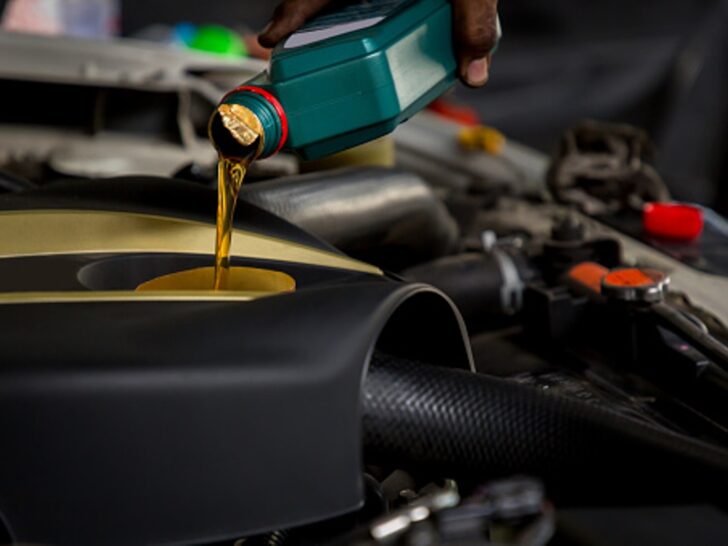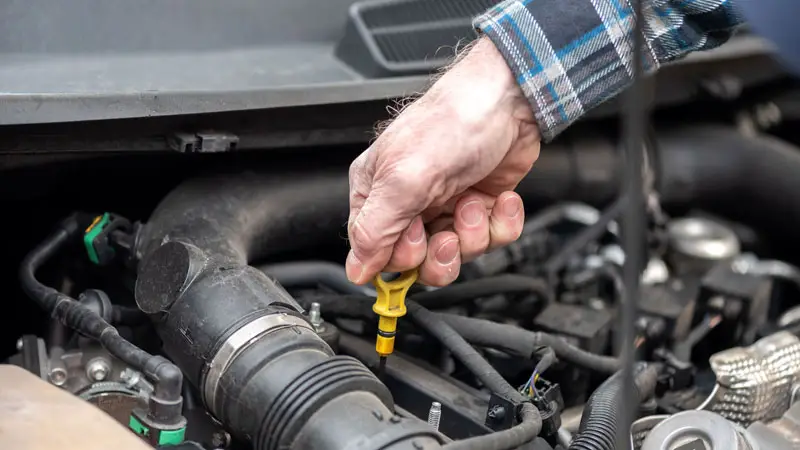Regular oil changes are an essential part of maintaining your car’s engine health. However, many car owners often wonder whether it’s necessary to completely change the oil or just top it off with new oil.
This dilemma can arise due to various factors such as oil leaks, burning oil, or simply forgetting to change the oil at the recommended interval. In this article, we’ll discuss the key differences between adding oil vs changing oil, and when you should do each of them.
- What Are the Differences Between Adding and Changing the Oil?
- When Should You Top Off Engine Oil Instead of Replacing It?
- When Should You Completely Change the Oil?
- How To Add Engine Oil to Your Car?
- How To Change the Engine Oil of Your Car?
- Final Thoughts: Adding Oil vs Changing Oil: When To Go With Which?
- Frequently Asked Questions
What Are the Differences Between Adding and Changing the Oil?
Oil is the lifeblood of your engine, and it’s essential to keep it in good condition for your vehicle to function correctly. When it comes to oil maintenance, two common practices are adding and changing oil.
Adding oil means topping off the oil level when it’s low while changing oil involves draining the old oil and replacing it with new oil. In this article, we’ll discuss the differences between adding and changing oil and the benefits and drawbacks of each method.
Procedure
Adding oil is a simple process that involves checking the oil level and adding the necessary amount to bring it up to the recommended level. On the other hand, changing oil involves several steps, including draining the old oil, replacing the oil filter, and adding new oil. Changing oil is more time-consuming and requires more effort than adding oil.

Cost and Time required
Adding oil is a cost-effective and time-saving solution compared to changing oil. A quart of oil costs a few dollars, and adding it to the engine takes only a few minutes. In contrast, an oil change in the vehicle involves buying new oil, a new oil filter, and potentially other tools. It also takes longer to complete, typically around 30 minutes to an hour.
Effectiveness in Maintaining Engine Health
Adding oil is a temporary solution that can keep your engine running smoothly for a short period. However, it doesn’t replace the benefits of changing oil regularly. Changing motor oil helps remove old, dirty oil from your engine, which can cause wear and tear on engine components. It also ensures that your machine is running with fresh, clean oil that will protect it from damage.
Environmental Impact
Changing oil produces more waste than adding oil, as you must dispose of the old oil and the oil filter. However, it’s essential to dispose of used oil and filters responsibly to prevent environmental damage. Many auto parts stores and mechanics offer oil recycling programs to help ensure proper disposal.
When Should You Top Off Engine Oil Instead of Replacing It?
Here are a few reasons why you may want to top off your engine oil instead of replacing it completely.
Leaking Oil
One common reason to go for engine oil top-off is an oil leak. If you notice oil stains on your garage floor or in your parking space, this may be a sign that your car is leaking oil. In this case, you can top off the engine oil to ensure that there is enough oil in the engine to lubricate its moving parts. However, it’s important to get the leak fixed as soon as possible to prevent further damage to your car’s engine.
Burning Oil
Another reason to top off your engine oil is if your car is burning oil. If you notice that your car is consuming oil at a faster rate than usual, it may be burning oil. In this case, you can top off the engine oil by adding fresh oil to existing oil to ensure that the oil level is sufficient for your car’s engine. However, it’s important to get your car checked by a mechanic to determine the cause of the oil burning, as it could be a sign of a more serious issue with your car’s engine.
Low Oil Level
If you notice that your oil level is low, you may be tempted to immediately schedule an oil change. However, in some cases, topping off the oil may be a more practical solution.

One reason why your oil level may be low is simply due to consumption over time. As your engine runs, it naturally uses up some of the oil. However, if the oil level is consistently low, it may indicate a leak in your engine.
When Should You Completely Change the Oil?
Let’s look at cases where it’s better to complete change the oil.
Oil Change Interval Reached
It is generally recommended to change the engine oil in your car every 5,000 to 7,500 miles, depending on the manufacturer’s guidelines. This is known as the oil change interval. Once this interval is reached, it’s time for a complete oil change.
Old engine oil can cause damage to your car’s engine, decrease fuel efficiency, and reduce its overall lifespan. So, it’s essential to follow the recommended oil change interval and get a complete oil change to ensure your car’s engine runs smoothly and efficiently.
Rough Vehicle Usage
Apart from reaching the recommended oil change interval, another reason to completely change your car’s oil is based on your vehicle usage. If you frequently engage in activities such as towing heavy loads, driving in dusty or dirty conditions, or taking short trips with frequent stops and starts, your oil may need to be changed more frequently.
How To Add Engine Oil to Your Car?
Adding engine oil to your car is a simple process that can be done in a few easy steps. First, make sure your car is parked on a level surface and the engine has cooled down. Open the hood and locate the oil filler cap, which is usually labeled “oil” and is located on top of the engine. Remove the cap and insert a funnel into the opening.
Slowly pour the oil into the funnel, making sure not to overfill the engine. Check the oil level with the dipstick and add more oil as needed until the level reaches the appropriate mark. Once you have added enough oil, replace the oil filler cap and close the hood.
Be sure to dispose of the old oil properly by taking it to a recycling center or an auto parts store that accepts used oil.
How To Change the Engine Oil of Your Car?
Changing the engine oil of your car is an essential part of car maintenance, and it’s a task that can be easily done at home. Here are the steps you can follow:
- Gather the necessary supplies: You will need a new oil filter, the appropriate type and amount of oil for your car, a wrench or socket set, a drain pan, and a funnel.
- Warm up the engine: Start the engine and let it run for a few minutes to warm up the oil. Warm oil flows more easily, making it easier to drain.
- Locate the oil drain plug: The oil drain plug is usually located underneath the car, towards the front of the engine. Place the drain pan underneath it.
- Drain the oil: Use a wrench or socket set to remove the oil drain plug and allow the old oil to drain into the pan.
- Replace the oil filter: Use an oil filter wrench to remove the old filter and replace it with a new one.
- Add new oil: Use a funnel to add the appropriate amount of new synthetic oil for your car’s make and model.
- Check the oil level: Start the engine and let it run for a few minutes. Turn off the engine and check the oil level using the dipstick. Add more oil if necessary.
Changing your car’s engine oil is a relatively simple task, but it’s important to do it properly to ensure your car runs smoothly and stays healthy for years to come.
Final Thoughts: Adding Oil vs Changing Oil: When To Go With Which?
In conclusion, while adding oil can be a quick and convenient solution for topping off the oil level in your engine, it is not a substitute for a complete oil change. Changing the oil at regular intervals is crucial to maintaining the health and longevity of your engine. It ensures that old oil and debris are removed and replaced with fresh oil, which helps to lubricate and protect the engine’s moving parts.
You can find answers to other similar queries by reading up our blog on engine oils.



